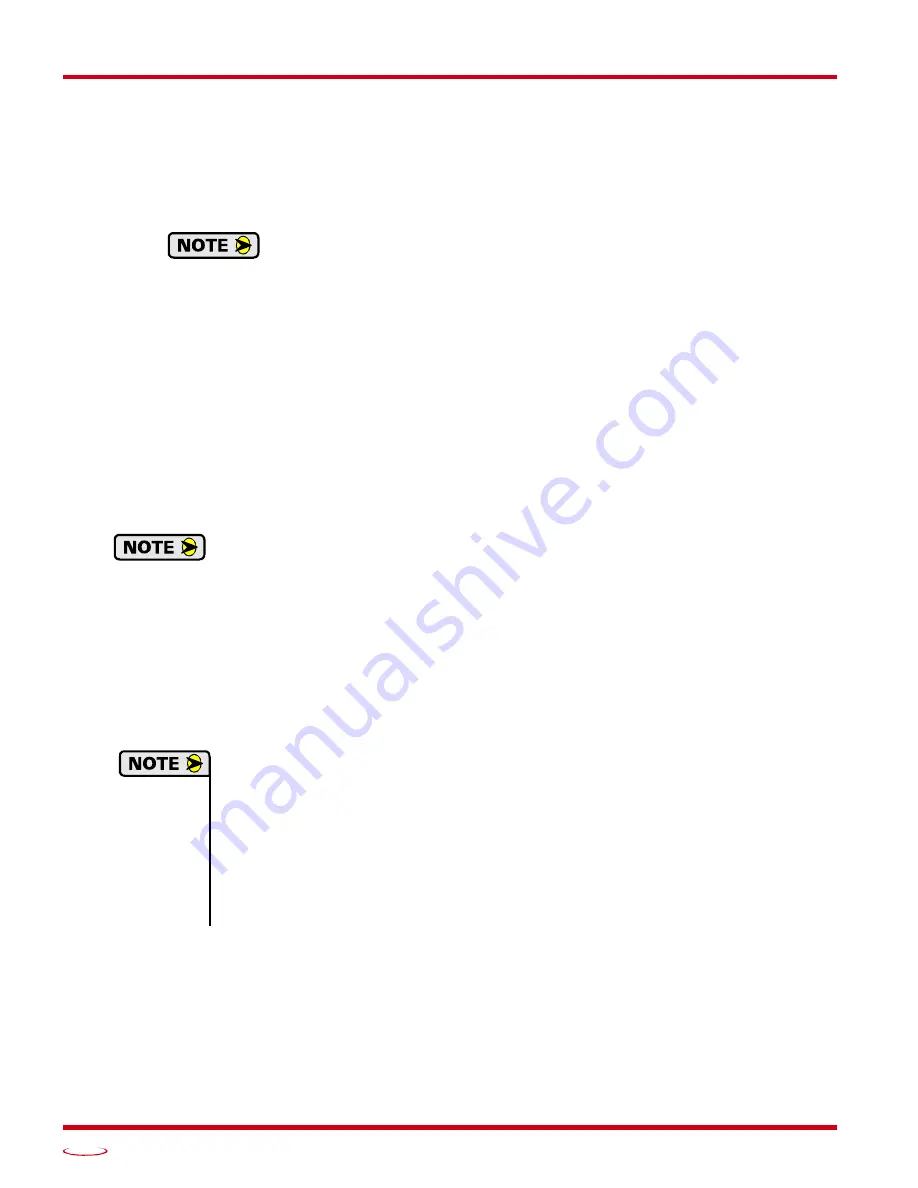
M
OTION
C
ONTROL
Networked Indexer/Driver User Manual
ADVANCED MICRO CONTROLS INC.
32
Basic Move Types (continued)
CW/CCW Registration Move (continued)
Controlled Stop Conditions
The Registration Move Command bit is reset to “0”.
A positive transition on an input configured as a
Stop Jog or Registration Move
Input.
Starting a Registration Move with a
Stop Jog or Registration Move
Input in its active
state will result in a move of (
Minimum Registration Distance
+
Programmed Number
of Steps
).
You toggle the Hold_Move control bit in the Network Output Data. The Networked Driver responds by
using the programmed Deceleration value to bring the move to a stop, without using the value of the
Programmed Number of Steps parameter. A Registration Move does not go into the Hold State if the
Hold_Move control bit is used to stop the move and it cannot be restarted.
Immediate Stop Conditions
The Immediate_Stop bit makes a 0
1 transition in the Network Input Data.
An inactive-to-active transition on an input configured as an E-Stop Input.
A CW or CCW Limit Switch is reached. If the limit that is reached is the same as the direction of travel,
for example, hitting the CW limit while running a CW move, a
Reset Errors
command must be issued
before moves are allowed in that direction again. If the limit that is reached is opposite the direction of
travel, a
Reset Errors
command does not have to be issued.
Note that it is possible to
start
a move while a CW or CCW Limit Switch is active as long as
the direction of travel is
opposite
that of the activated Limit Switch. For example, it is possible
to start a CW Registration Move while the CCW Limit Switch is active.
Encoder Registration Move
When the Networked Driver is configured to use a quadrature encoder, the position value from the encoder
can be used as a registration mark. Once the encoder count is reached, the move will begin to decelerate and
stop when the move slows to the configured Starting Speed. Absolute and relative type move types are sup-
ported. When programming an absolute move, the target position defines the encoder position that must be
reached before the move begins to decelerate and stop. When programming a relative move, the sign of the
target position determines the direction of the move and its magnitude determines the distance traveled.
1) The encoder is typically mounted separate from the motor. For example, the encoder can
measure the length of a flexible and/or stretchable material, or material on a spool. The
motor is used to drive the material for the length measured by the encoder, regardless of the
slipping, flexing, or stretching, of the material as it is driven by the motor.
2) This is an open-loop move. The encoder does not provide feedback in a closed-loop, servo
control fashion. The encoder position is used to decide when the move deceleration begins,
not the final position of the move.
3) You do not have to preset the position or home the machine before you can use a relative
Encoder Registration Move.
















































